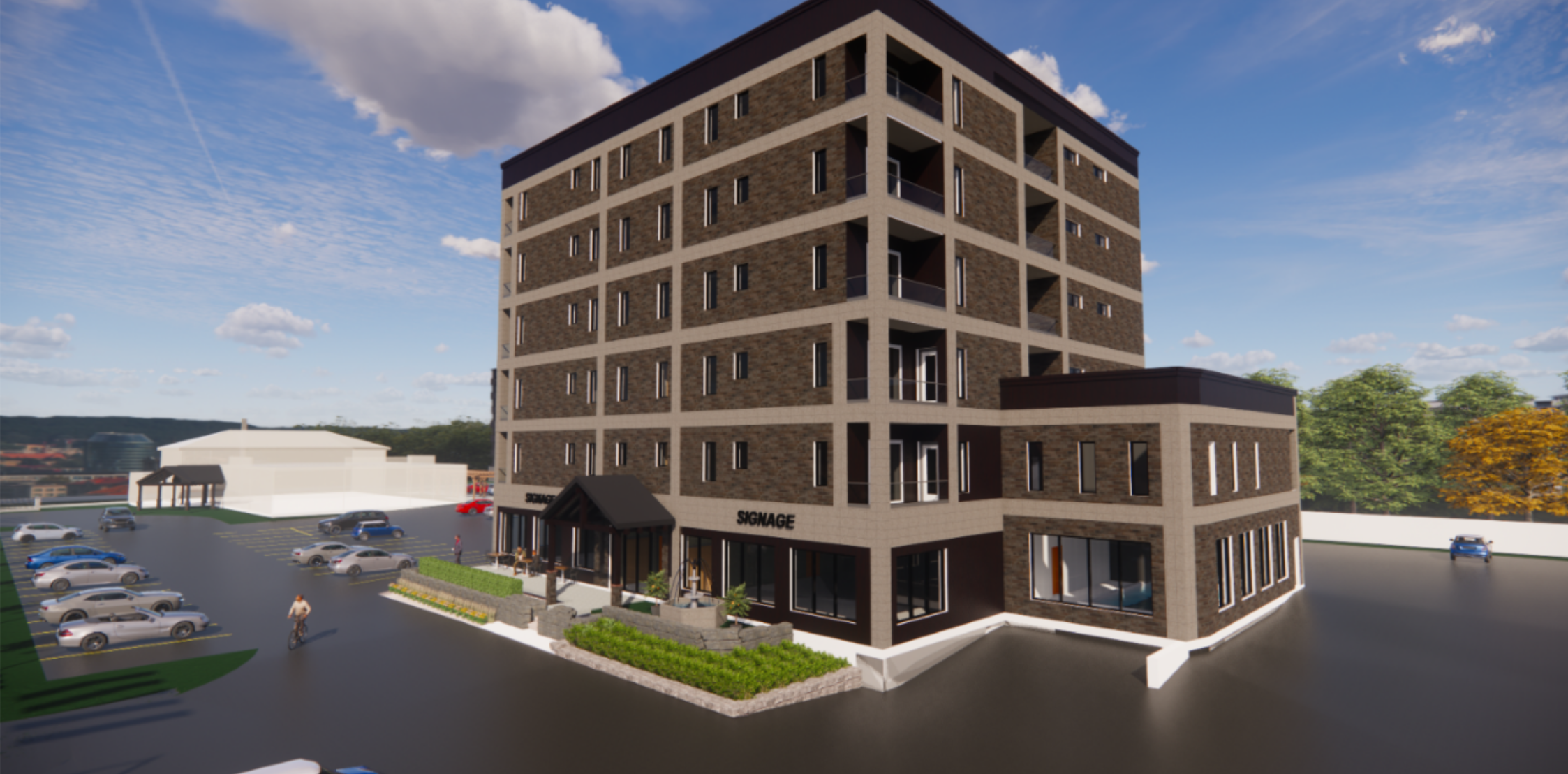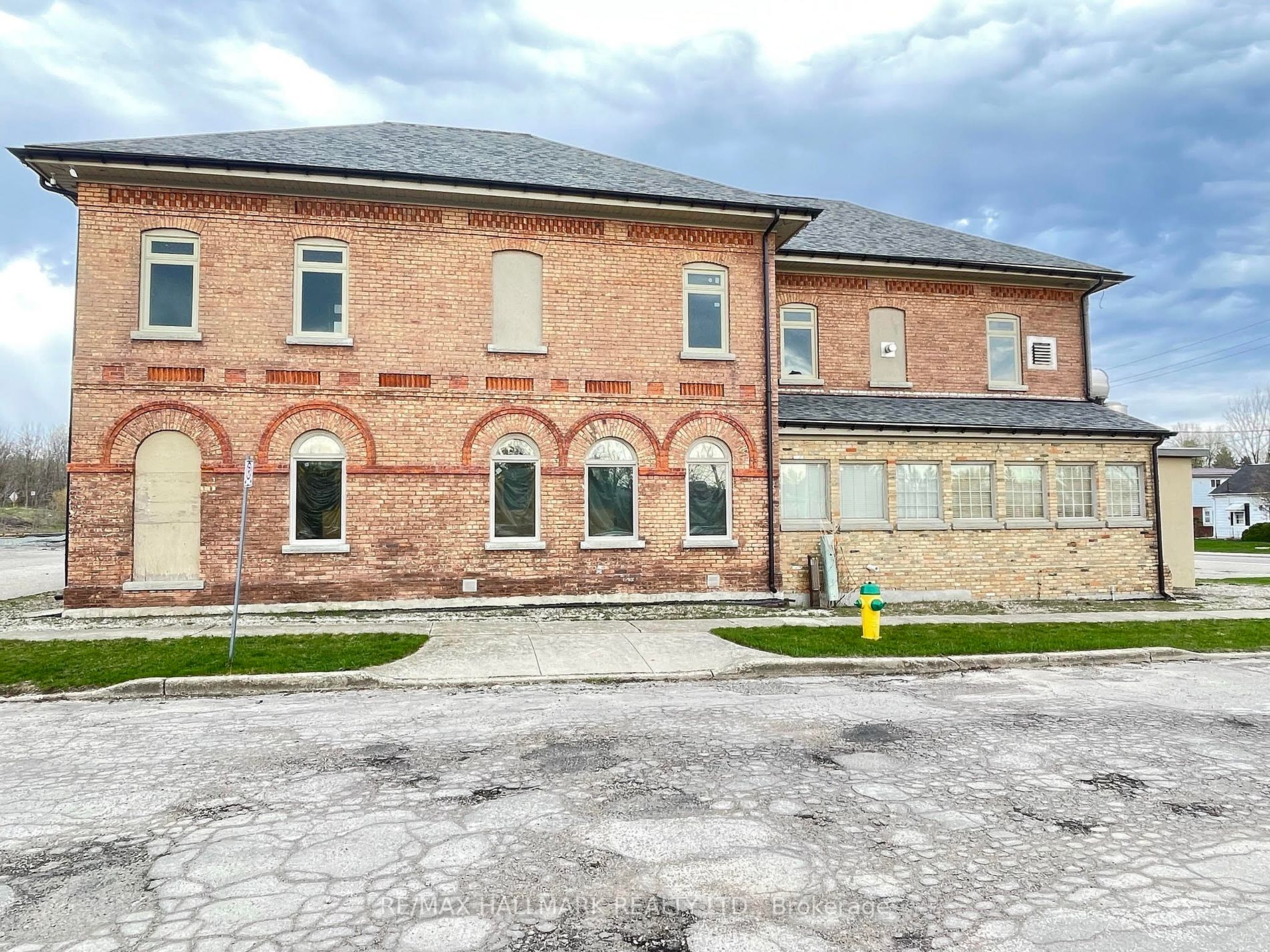Author The Lilly Commercial Team

W.P. Carey Pays $468M US to Acquire Apotex GTA Properties
U.S.-based REIT W.P. Carey (WPC-N) announced this morning it will invest $468 million US to acquire a “critical portfolio of four pharmaceutical R&D and manufacturing campuses” in the Greater Toronto Area operated by Canadian global generic drug giant Apotex Pharmaceutical Holdings Inc.
The portfolio represents the majority of Apotex’s global operations, comprising 11 properties which cover about 2.3 million square feet of space. It is being acquired as a sale-leaseback.
The lease is structured as a triple-net master lease with rent payable in U.S. dollars and fixed rent escalations over a 20-year term. The sale-leaseback transaction closed April 3, concurrently with private equity firm SK Capital’s majority buyout of Apotex, financing a portion of the buyout.
Financial terms of SK Capital’s buyout of Apotex have not been released.
“We’re thrilled to close this sale-leaseback and welcome Apotex as a top tenant. In addition to its existing scale, we believe Apotex will continue to benefit from the deep expertise of its private equity sponsor in the pharmaceutical manufacturing sector,” Tyler Swann, managing director of W. P. Carey, said in the announcement. “This investment is a great example of our ability to partner with private equity firms to leverage sale-leaseback proceeds to optimize the capital stack for new acquisitions. We look forward to growing our partnership with Apotex and SK Capital alike.”
W.P. Carey a major net lease REIT
W. P. Carey is a major net lease REIT specializing in corporate sale-leasebacks, build-to-suits and the acquisition of single-tenant net lease properties. The firm has made significant investments in industrial assets so far in 2023, with this transaction bringing its total year-to-date investment volume to approximately $650 million – most of it in industrial assets.
W. P. Carey reports an enterprise value of approximately $24 billion, holding a diversified portfolio of commercial real estate which includes 1,449 net lease properties covering approximately 176 million square feet, and a portfolio of 84 self-storage operating properties, as of Dec. 31, 2022.
With offices in New York, London, Amsterdam and Dallas, the company’s focus remains investing primarily in single-tenant, industrial, warehouse and retail properties located in the U.S. and Northern and Western Europe, under long-term net leases with built-in rent escalations.
Apotex was founded in the mid-1970s by Barry Sherman, a billionaire who was found murdered in his Toronto home with wife Honey in 2017. The future of the company has since been uncertain, and embroiled in controversy.
Apotex has also been the subject of legal action including a price-fixing scandal in the United States.
At the time of Sherman’s death, the company was considered to be worth about $3 billion.
Source Real Estate News EXchange. Click here to read a full story

Office Market Sees First Quarterly Net Rent Decline In Years
While it was less than one per cent, the Canadian office market saw its first quarterly asking net rent decline in years in Q1 2023, according to Colliers’ new “National Market Snapshot” report.
The overall average asking net rent across the country is $20.37 per square foot. It’s $22.79 downtown and $17.37 in the suburbs.
Colliers senior national director of research Adam Jacobs told RENX the Canadian office market was hit by a double whammy of more people working from home due to the COVID-19 pandemic and a record amount of construction, but that cycle is coming to a close.
“I don’t see this situation in the future where we have rising vacancy and we’re still adding millions and millions of square feet of office space to downtown,” said Jacobs. “I think we’re going to get back to a situation where there’s a lot less construction going forward and we’re just going to deal with the stock that we have.”
The national office vacancy rate is 13.3 per cent, including 14.7 per cent downtown and 12 per cent in the suburbs.
A recent survey of Colliers-managed buildings showed that small businesses are more committed to having employees in the office than large corporations. However, Jacobs thinks more major occupiers will follow RBC’s recent lead and become more demanding when it comes to having more employees in the office.
National industrial overview
While Canada’s industrial vacancy rate is one per cent, each of Colliers’ tracked markets with a vacancy rate below one per cent in Q4 2022 saw increased vacancy in Q1 2023. It’s still a landlord’s market, however, despite record high construction.
National average industrial asking net rents continue their steady climb, sitting at $13.81 per square foot, which represents a 32 per cent annual increase. Affordable prices relative to Toronto and Vancouver can be found in the Prairie markets, none of which are above $12 per square foot, but these areas are also experiencing rapid rent growth.
“We’re building more and more and more industrial and yet, no matter how much we build, it doesn’t slow the market down or flood the market or drive the vacancy up,” said Jacobs. “It feels like we’re building so much, but it’s really not that much relative to how much is probably needed.”
Jacobs pointed out that, despite these steep increases, industrial rents are still lower than in markets including California and New Jersey. Large corporations looking for distribution and warehouse space aren’t overly rent-sensitive either, he added.
While industrial rents will likely keep rising, the rate of increase is expected to taper off since Jacobs said the recent pace can’t keep going.
“The sales side has really slowed down and the leasing side hasn’t, and I’m not sure if those have to come in line or if it will just stay that way,” said Jacobs.
British Columbia
Vancouver and Victoria’s office markets have continued to do relatively well, with respective 6.5 and 6.4 per cent vacancy rates and average asking net rents of $34.67 and $24.01 per square foot. With their reliance on technology companies, Jacobs said those office markets could take a bit of a hit.
“Tech has really driven things and it’s been an incredibly positive driver, but we’re now hearing the news that there’s a pretty big pullback in tech and people are holding their breath a little bit.”
This quarter delivered the largest amount of new office supply in seven years in Vancouver. The Post’s south and north towers’ more than one million square feet were fully pre-leased to Amazon, and Bosa Waterfront added 355,000 square feet of space.
Vancouver’s suburban office vacancy rate is five per cent, compared to 8.4 per cent downtown, and Jacobs said there’s huge demand for space in Burnaby and Richmond. Downtown average net asking rent remains much higher, however, at $39.91 per square foot compared to $27.01 in the suburbs.
Vancouver’s industrial vacancy rate is 0.6 per cent despite more than 710,000 square feet of space being added to the market, and the average asking net rent rose to $22.09 per square foot. Some businesses have started decreasing their footprint to maintain similar operating costs.
Victoria’s Plexxis Tower was completed this quarter and is ready for occupancy. The five-storey building provides 67,074 square feet of office space and 10,298 square feet of retail space to the suburban market.
Victoria’s industrial vacancy rate rose slightly to 0.4 per cent while its average asking net rent increased to $18.13 per square foot. Industrial product remains highly sought after by both owner-users and investors, but supply limitations have been a barrier.
Alberta
Calgary’s 27.7 per cent office vacancy rate is the highest of the 12 markets included in Colliers’ report, well above Edmonton’s second-place 20.1 per cent. Calgary’s average asking net rent is $14.39 per square foot and Edmonton’s is $16.65.
“Usually downtown still commands higher rents, but I think Calgary is the exception where you’re actually paying higher rents in the suburbs,” said Jacobs.
Calgary is offering incentives and looking to convert certain office buildings into residential spaces, vertical farms or other uses. Half-a-million square feet of office inventory were removed from the market in this quarter.
After a record-breaking year for Calgary’s industrial market, there was some cooling in this quarter when it had a 1.8 per cent vacancy rate.
Leasing activity continues to be solid and dwindling available inventory is putting upward pressure on asking net rental rates, but it’s still comparatively much cheaper to occupy space in the city than in other major industrial markets across Canada.
Edmonton’s industrial vacancy rate dipped to 3.8 per cent, the first time it fell under four per cent in nearly eight years. The average asking net rent is $10.47 per square foot.
Construction volume remains high in Edmonton, with more than four million square feet being built and more than three million expected to be delivered within the next six months.
This large influx should help alleviate the perpetual demand for newer and larger distribution centres and warehousing space along major traffic routes.
Saskatchewan and Manitoba
Saskatoon has an office vacancy rate of 11.9 per cent and average asking net rent of $19.96 per square foot.
Saskatoon’s industrial sector is still short on smaller-bay warehousing spaces, but availability is opening in larger speculative builds in the BizHub Industrial Park. It has a two per cent vacancy rate and the average asking net rent continued to rise to $11.58 per square foot.
Regina’s office vacancy rate rose slightly to 17.9 per cent while the city’s average asking net rent rose to $15.86 per square foot.
Regina’s industrial market started 2023 off well, recording positive absorption, a decrease in its vacancy rate to 1.4 per cent and an increase in asking net rent to $11.42 per square foot.
While Winnipeg’s suburban office market had previously been outperforming downtown, with higher absorption and lower vacancy, it also saw an increase in vacancy to start this year. The suburbs has an 11.3 per cent vacancy rate, while it’s 14.9 per cent downtown.
A significant number of spaces came back to the market, which caused negative absorption, and the average asking net rent dropped to $16 per square foot.
Winnipeg’s industrial leasing activity remains strong. While the vacancy rate increased quarter-over-quarter to 1.5 per cent, this can be attributed to larger blocks of older inventory coming back to the market, including 156,715 square feet at 1555 Buffalo Place.
Ontario
Existing downtown Toronto office tenants continue to downsize their locations in proximity to the financial core, and the vacancy rate rose to 10.4 per cent — the same as in the suburbs. The average asking net rent is $34.98 per square foot in downtown and midtown and $17.80 in the suburbs.
“Toronto is the extreme case where downtown has just suffered so much because it’s so dependent on big business and riding the subway and riding the GO Train and all that,” said Jacobs.
Office spaces under 10,000 square feet are seeing more activity and landlords are building out model suites to attract tenants looking for simple solutions. Tenants looking for 20,000 square feet and above are being more calculated with their timing and decision making.
Despite rising vacancy rates in central Toronto, Jacobs said there’s been no movement to repurpose office buildings to other uses.
While Toronto industrial lease rates remain high across the board, with an average asking net rent of $18.01 per square foot, the market is beginning to see the flight to quality experienced in the office market during the course of the pandemic.
Facilities built within the last 10 years are achieving the highest rental rates, while less contemporary buildings are sitting on the market longer.
Ottawa’s office market continues to soften, with its vacancy rate rising to 12.3 per cent. Still, the average asking net rent increased to $17.24 per square foot. Sublet space continues to rise, with approximately 65 per cent of sub-lease availabilities in the suburbs.
Ottawa’s industrial vacancy rate is 1.1 per cent and the average asking net rent has risen to $16.14 per square foot as demand continues to increase.
Nine industrial projects totalling 622,912 square feet are under construction in Ottawa. Another 30 are in the planned or pre-leasing development stage. With perpetually low vacancy rates and the upcoming addition of modern facilities, rental rates are expected to continue to climb.
Waterloo Region’s office vacancy rate is 10.4 per cent and its average asking net rent fell to $16.63 per square foot.
Waterloo Region’s industrial office vacancy rate is 0.7 per cent and its average asking net rent dropped to $11.89 per square foot. Close to 20 million square feet of new space is either planned or under construction.
Montreal
Montreal’s office vacancy rate is 14.5 per cent and its average asking net rent is $18.68 per square foot. Subleases are rising and AAA- and A-class spaces are being absorbed at a higher rate and at the expense of B- and C-class spaces downtown.
Montreal’s industrial vacancy rate is 0.9 per cent and its average asking net rent rose to $16.71 per square foot. Jacobs said industrial rents were increasing by more than 50 per cent annually, but that can’t be maintained.
There’s still demand for high-quality industrial assets and Alberta Investment Management Corporation (AIMCo) and Montoni acquired a property at 3400 Raymond-Lasnier from TD Asset Management for $108 million during the quarter.
Halifax
Halifax’s office vacancy rate increased slightly to 14.1 per cent, which is mostly attributable to an influx of sub-lease space in the suburbs. The average asking net rent is $16.43 per square foot.
While the industrial vacancy rate rose to 2.4 per cent, that can be attributed to two newly built properties totalling more than 140,000 square feet.
Demand for space remains strong and more than 530,000 square feet of product is under construction. About 480,000 of that is expected to be completed by year-end.
The average asking net rent increased by four per cent quarter-over-quarter to $12.42 per square foot and is expected to continue to rise over the course of this year.
Source Real Estate News EXchange. Click here to read a full story

ULI Meeting To Bring 5,000 CRE Professionals To Toronto
COVID-19 put a halt to Toronto’s plans to host the 2020 Urban Land Institute(ULI) Spring Meeting, but it’s now all systems go for ULI Toronto to bring the event to the city May 16 to 18.
Close to 5,000 real estate professionals from a wide variety of sectors are expected to attend the ULI Spring Meeting, which will be based at the Metro Toronto Convention Centreand feature more than 100 speakers, over 30 sessions and 29 tours around the city.
ULI is the oldest and largest network of cross-disciplinary real estate and land-use experts in the world, with more than 45,000 global members. Its mission is to shape the future of the built environment for transformative impact in communities worldwide.
ULI Toronto is supported by more than 2,600 public and private sector members.
ULI Toronto executive director Richard Joy told RENX the last international ULI event of any magnitude to be held in Toronto was in 1985, so a return to the city was long overdue considering it’s “arguably the most dynamic real estate market on the continent, with growth that is unprecedented.”
Since such large events have to be scheduled and planned well ahead of time, Denver hosted a hybrid live-virtual ULI Spring Meeting in 2021 and it returned to a more traditional live format in San Diego last year.
Toronto took the first available opening after 2020’s cancellation and it’s expected to be the best-attended spring meeting in ULI history.
Toronto has a lot to offer
“It’s very significant in the sense that it’s an opportunity to showcase a real estate development story and its many dimensions — with the economic and business story being one of them, but also the social stories, the environmental stories, the way we’re approaching issues like truth and reconciliation, and the way we’re approaching diversity, equity and inclusion,” Joy said.
“There are just so many dimensions to our real estate story and they’re not all good. I don’t think this is an opportunity to simply showcase what we think is the best of the city, but it’s also to showcase some of the great challenges we face.”
Joy expects about 85 per cent of ULI Spring Meeting attendees to be American, many of whom probably aren’t aware of the size of Toronto and its ever-growing real estate market.
He thinks many attendees may also be surprised to discover how many real estate-related companies that do business internationally are headquartered in Toronto.
“They’re going to see some incredible best practices around things like transit-oriented development, the densification of suburbs, green infrastructure and developing in complex urban geographies,” Joy said.
Local and Canadian attendees will also be exposed to American and international best practices and have the chance to network and lay the groundwork for business opportunities with people and companies they might not normally have contact with.
ULI Spring Meeting components
ULI Spring Meeting sessions will deal with: building healthy places; infrastructure; data; equitable development; 15-minute communities; retail challenges; homelessness; building materials; legal issues; flexible office space; mall redevelopment and densification; workforce housing; proptech; the urbanization of suburbs; development financing; high-rise towers; institutional capital; smart buildings; office conversions; life sciences facilities; housing affordability; economic forecasting; health-oriented communities; climate disclosure mandates; achieving net zero buildings and communities; retrofitting historic buildings; district energy; and more.
Among the areas covered by the tours will be: the eastern waterfront; the St. James Town and St. Lawrence neighbourhoods; the ravine system; Don Mills; Yonge Street retail; the Regent Park and Alexandra Park neighbourhoods; Downsview; post-secondary institutions; the financial district; Humber Bay Shores; cultural hubs; sports and entertainment venues; and Yorkville.
“Toronto has been notoriously shy about holding larger international events,” Joy said. “Montreal is much more wired into celebrating its international stature than we are, so I think this is going to be an interesting opportunity for Torontonians to take stock of our place in the world — which is no small place.”
Source Real Estate News EXchange. Click here to read a full story

Canada’s CRE Industry Lags Global Peers on Data Science: Altus
Canada’s commercial real estate firms lag well behind global peers in adopting, and adapting, data science into their investment strategies, according to Altus Group’s The State of Data Science in Commercial Real Estate Investing report.
“Ninety-three per cent of Canadian firms use analytics, but only 35 per cent use data science,” Heidi Learner, head of innovation at Altus Lab, told RENX. “If we look at Canada as a proportion of samples relying on data science, albeit differently, the Canadian response rate is the lowest.”
Data science unearths meticulous information traditional statistics, which Learner described as comparatively static, aren’t capable of interpreting.
For example, the latter will reveal a neighbourhood’s vacancy rates going back five years, but data science could instead shed light on who lived in that neighbourhood during the corresponding period as well as how much money those residents earned, their age profiles and who among them have children.
“All of these variables potentially interact. Use of data science allows us to extract the variables that are the most important drivers of rent to come up with fair value assessments of what rents should be going forward,” Learner said.
“The data science approaches are more robust than some of the prior approaches that rely on purely statistics relationships.”
Data science adoption a matter of time
Learner added Canadian firms are more likely slow adopters, rather than Luddites.
After all, Canada’s real estate market has long had an unflattering reputation for trailing its southern neighbour when it comes to innovation and technology, but she noted demand for data science is hearty in the Great White North, even if roughly only a third of the country’s commercial real estate industry presently uses it.
For perspective: 56 per cent of U.S.-based commercial real estate firms employ data science in their operations, while adoption percentages range from the 40s to 50s in Europe. Among Asia Pacific countries — which include Oceania — it’s about 50 per cent.
Learner remains optimistic Canadian firms will follow suit.
“Canadian firms are relying less on data science techniques than their global peers and it suggests there’s further adoption to come as investors become more comfortable with these techniques and realize that, if they don’t have the capability to develop these technologies in-house, they can hire third-party providers,” she said.
The reason it could become necessary is the data can be highly intricate, unlike the preponderant wholly stats-based method that relies on static information, which can result in missed opportunities.
Canada’s largest CRE firms aware of deficit
Colliers is one of the largest commercial real estate companies in Canada and, as such, releases a host of reports throughout the year for the office, retail, industrial and multiresidential sectors.
According to Adam Jacobs, Colliers’ senior director of research in Canada, the firm uses data science for mapping and geographical information system purposes, which has helped it ascertain, for clients, things like whether their commercial enterprises should be set up near particular universities or in downtown cores instead.
“One other thing that comes to mind is we have models that look at traffic — ‘How crowded will (a certain) intersection be on Monday morning?’ ” he said.
“We have historical data, then we assume there will be ‘this much’ population growth and new cars on the road, so we’re also modelling on that side.”
Colliers has kept abreast of the ways in which data science is slated to evolve, which could entail estimating building sale prices when, or if, they hit the market.
Such determinants are, however, convoluted in the commercial sphere at present — one painstakingly unclear factor is employees’ post-COVID-19 return to offices.
Jacobs said forecasting is the next, maybe even final, frontier for data science.
However, that could require accurate population projections that themselves are conditional upon myriad variables, including unemployment rates across various industries (which is no small task in a city like Toronto that has the most diversified economy in the country).
Another factor would be hybrid work configurations and whether employees tend to be in their offices on certain days of the week over others. If so, which ones and why? It’s too early today for such data sets, but Jacobs believes they’re coming.
“The predictive side is the final frontier and I don’t know we necessarily, as a company, are there yet,” Jacobs said, adding, “that’s probably coming for the industry in the next five years.
“These are things we didn’t consider five years ago when it was just based on real estate fundamentals.”
Urgency bucked by simplicity
Unlike the United States, the world’s third-largest country by population which has an abundance of sub-markets, Canada’s commercial real estate market has been relatively easy to predict and, COVID-19 notwithstanding, the industry hasn’t had to contend with many hurdles.
A combination of rising interest rates and contracting credit markets globally, as well as, on the domestic front, inert post-pandemic recovery, are now creating uncertainty for the next few years.
However, that might expedite urgency for more intricate data to allow firms to edge out their competition.
“I think it’s just a little harder at the ground level of brokerages, where it’s a big investment and they only operate in, say, five markets, so they don’t see the reward in the same way as in the U.S., where it’s maybe 12 times the size and there’s more of an immediate benefit because there are more competitors,” Jacobs said.
“The impetus is there with us and it’s there with our competitors.”
Source Real Estate News EXchange. Click here to read a full story

Dream, PaulsCorp Invest in CRE Financing Venture Avrio
Dream Unlimited Corp., along with PaulsCorp LLCand U.S.-based financing veteran Vicky Schiff have partnered to launch Avrio Real Estate Credit, which plans to offer short-term, first mortgage debt and other structured finance products.
Those offerings are to include B notes, mezzanine debt and preferred equity for the acquisition, refinancing and recapitalization of commercial real estate assets, with loans ranging from $25 million to $150 million.
Avrio, which will maintain a Toronto office but be based in Denver, represents Dream’s entry into the U.S. credit market.
“Given the current supply gap of available debt to meet the needs of real estate operators and developers in the U.S, Avrio will play a critical role in bringing flexible and creative debt funding to developers searching for this type of instrument,” said co-founder and Dream’s (DRM-T) chief responsible officer Michael Cooper in a statement.
“Dream places a strong emphasis on sustainability across all of our strategies and Avrio fits well within our goals of building better communities in our markets.”
Dream has over 600 employees and 12 offices across Canada, the U.S. and Europe with over $23 billion in assets under management throughout North America and Europe. Dream also develops land and residential assets in Western Canada.
Avrio
In addition to Denver and Toronto, Avrio also has offices in New York and Los Angeles.
According to a release, the venture will use a process developed in conjunction with Dream’s sustainability and ESG team to collect, analyze and report on ESG data “in a streamlined manner, intended to help external partners and borrowers improve their assets ESG scores, attributes and their overall impacts on their communities and the environment.”
Schiff, who sits on Dream’s board of trustees, was most recently the co-founder and managing partner of Calabasas, Calif.-based Mosaic Real Estate Investors.
She has an extensive background in the real estate and financing sectors stretching back to 1989, has founded or co-founded a number of ventures and has public and private board experience.
“We believe with the current real estate capital markets experiencing some dislocation, now is an opportune time,” Schiff, who is Avrio’s CEO, said in a statement.
“In addition to financing new development and value-add projects that utilize energy-efficient and green construction materials, methods, or systems, we want to work with borrowers who create jobs, encourage education and employee engagement and who are dedicated to building projects that help expand the inventory of workforce, affordable and transitional housing.”
PaulsCorp is a family-based real estate investment, development and management company.
With over 230 employees, the company has developed or managed over $6.5 billion in real estate assets including approximately 15,000 single-family homes, multiresidential units, townhomes and condominiums.
PaulsCorp currently has over $2 billion in assets under management and $825 million under development.
Kyle Geoghegan, previously the managing director for Trez Capital, has also joined Avrio as U.S. head of originations.
Source Real Estate News EXchange. Click here to read a full story
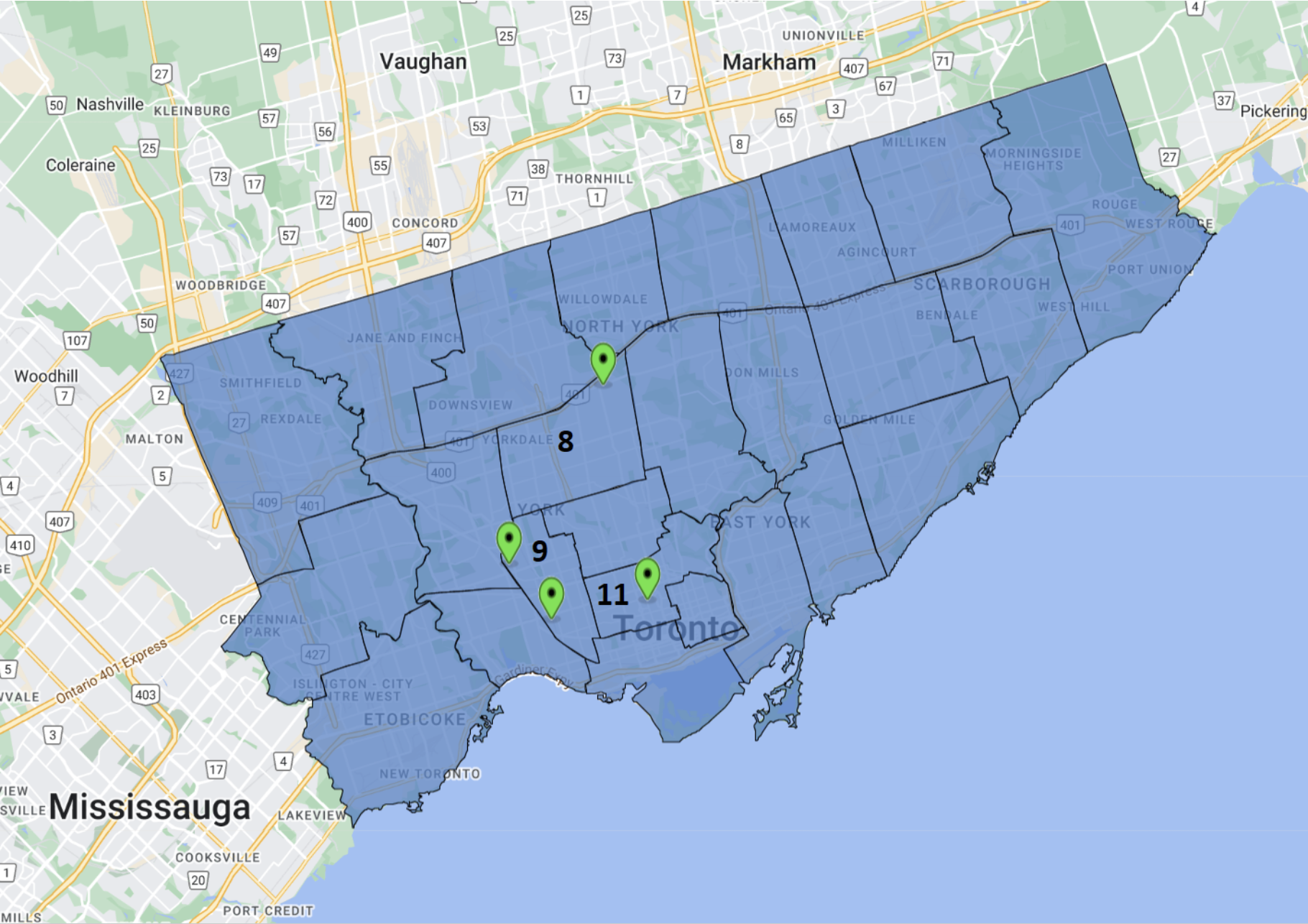
UrbanToronto Pro Report Shows Slow Month in Development Applications
The Toronto planning landscape has seen a dramatic shift from January, 2022 to January, 2023. Between the planned introduction of inclusionary zoning, rising interest rates, falling housing prices, inflation, the introduction of Bill 23, a new City Council, and more, developers had a lot to consider when it came to proposing new projects in the city.
That said, January is usually a quiet month in terms of new applications, and this year was no exception. In January, 2023, only 4 applications were proposed, for a total of 5 buildings. However, compared to 2022 (which had 5 applications proposing 10 buildings), the ambition of the proposals was much more constrained. As this year only 2 of these projects were residential, smaller than usual numbers should be anticipated.
This year saw 202 dwelling units and 156 vehicular parking spots, as opposed to 810 dwellings and 382 parking spots proposed in January, 2022. The GFA proposed decreased significantly to ~268,000 ft², from ~671,000 ft² the year prior. However, the site area of the proposals increased this January to ~345,000 ft², up from ~154,000 in the same month last year. As a result, this year’s FSI is an unusually low 0.78, compared to 4.36 in January, 2022.
Unit sizes are likely to be bigger for projects proposed this month, as the residential GFA was at 956 ft² per unit, an increase of 27% over the 748 ft² last year. Since there are only 2 condo projects (190 Ridley and 150 Sterling), this is too small a sample to consider indicative of a trend.
Greater uncertainty continues to weigh a heavy burden on development applications, and — for the moment — on the future of growth in Toronto. Looking forward the rest of 2023, while the economic headwinds are certainly a challenge, navigating the new political landscape has uncertainties with it as well. Not only with respect to handling by new councillors and soon a new mayor, but also with the new “strong mayor” powers coupled with other changes re: how planning decisions get made. These changes could result in much faster planning reviews, thus lowering the cost somewhat for developments. However, how the changes end up being implemented remains to be seen.
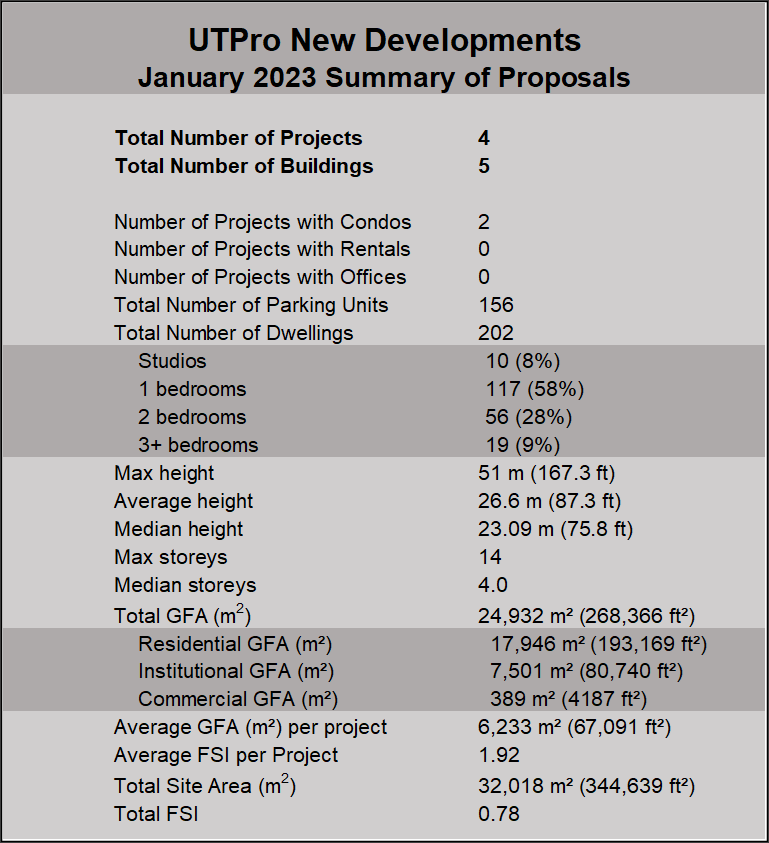 Summary of applications submitted in January, 2023. Data from UTPro.
Summary of applications submitted in January, 2023. Data from UTPro.
 The mix of dwelling units for development applications submitted to the City of Toronto in January, 2023. Data from UTPro.
The mix of dwelling units for development applications submitted to the City of Toronto in January, 2023. Data from UTPro.
 The GFA mix for development applications submitted to the City of Toronto in January, 2023. Data from UTPro.
The GFA mix for development applications submitted to the City of Toronto in January, 2023. Data from UTPro.
 The mix of vehicular parking for development applications submitted to the City of Toronto in January, 2023. Data from UTPro.
The mix of vehicular parking for development applications submitted to the City of Toronto in January, 2023. Data from UTPro.
 Bicycle vs vehicular parking units for development applications submitted to the City of Toronto in January, 2023. Data from UTPro.
Bicycle vs vehicular parking units for development applications submitted to the City of Toronto in January, 2023. Data from UTPro.
Source Urban Toronto. Click here to read a full story
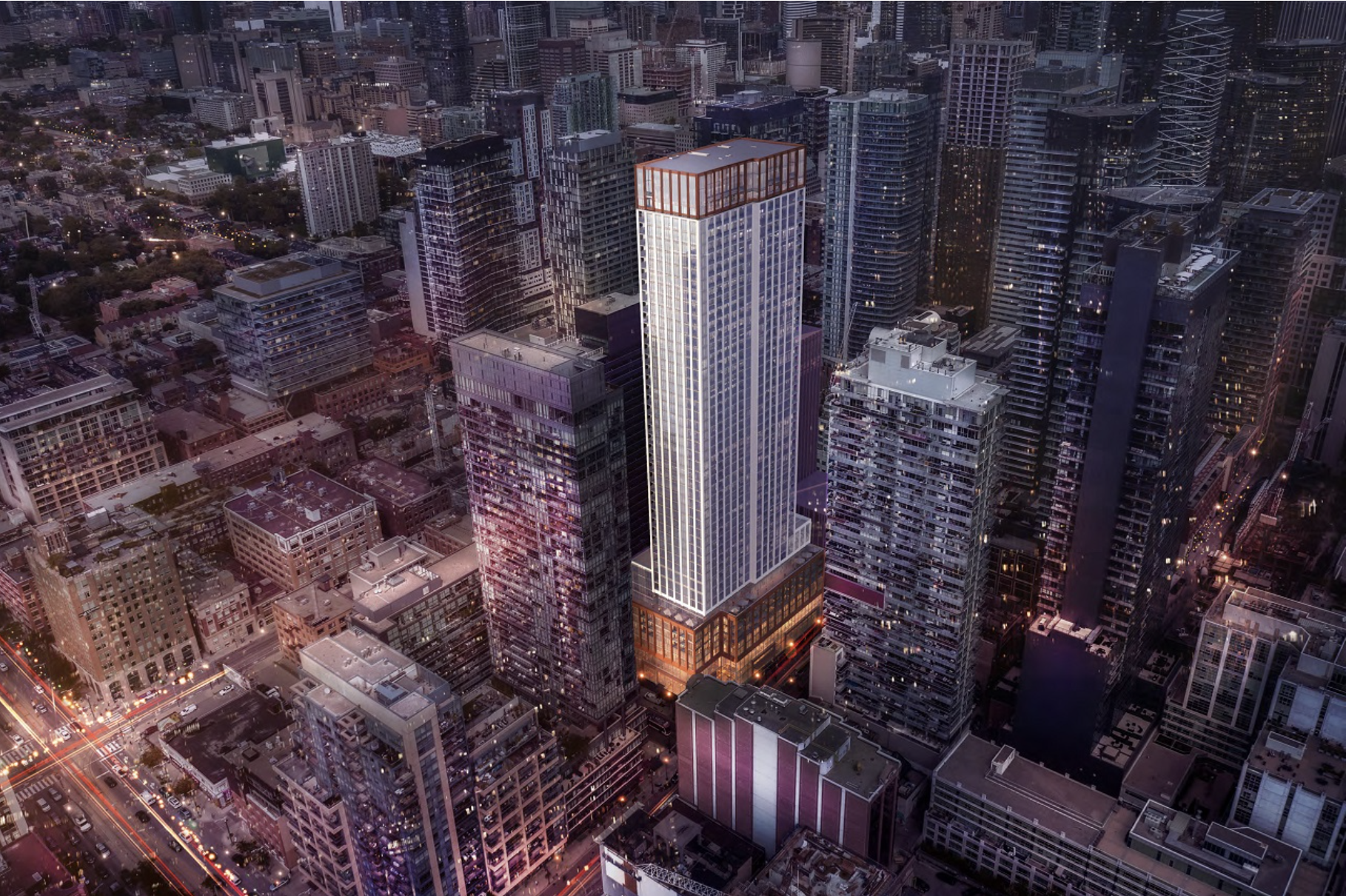
Crane Goes Up at 400 King West With Excavation Complete
It has been nearly four years since Mountain Equipment Coop (MEC) vacated their King Street retail store for Queen Street, leaving the well situated Entertainment District site poised for a significant redevelopment effort. Purchased by Plaza, the developer is now building a 49-storey mixed-use, but mostly residential condo development, 400 King West, on the site. Designed by BDP Quadrangle, the project started construction last year, with demolition getting underway in the late spring. More recently, the project is now well into construction, with excavation complete and a tower crane installed.
Tracking how the project got to this stage reveals some interesting construction processes that were activated in response to the complex set of site specific circumstances that define projects taking place within the dense urban context.
One of these processes was reported on in an earlier story, describing how the building is repurposing the existing foundation walls of the demolished MEC building. With additional excavation required to carve out the project’s three levels of below grade parking, the installation of shoring walls beneath these existing foundations has been an interesting and technical process to follow, and has appeared to advance in stages so as not to destabilize the foundations of the surrounding buildings.
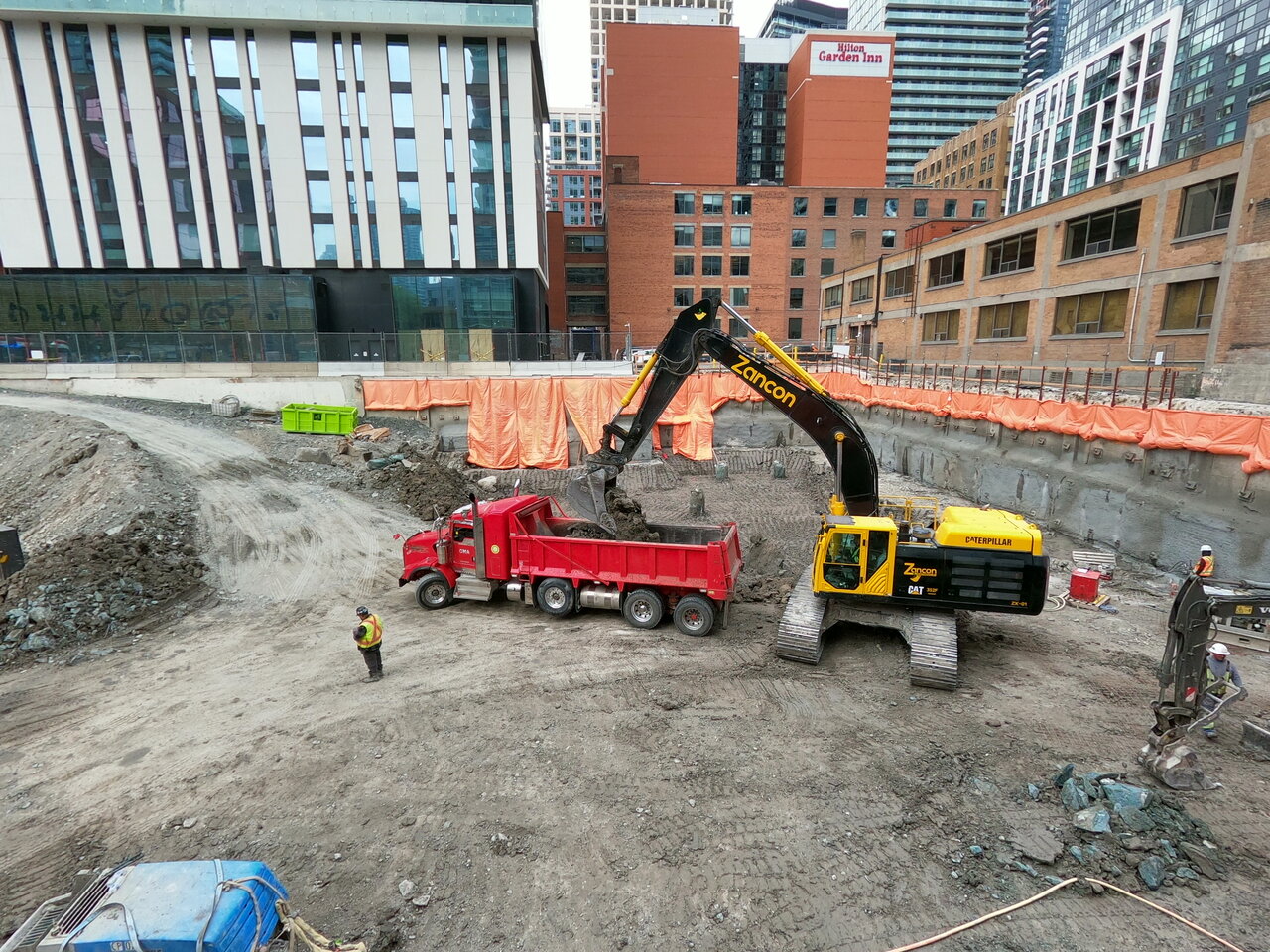 The project’s shoring walls have been installed below the existing foundations of the previous building, image by UT Forum contributor Red Mars
The project’s shoring walls have been installed below the existing foundations of the previous building, image by UT Forum contributor Red Mars
Another interesting tactic implemented on the confined site to aid in the construction process was the creation of a robust staging platform on the southwest corner of the site. Pictured to the right in the image below, the platform is made of a solid concrete slab reinforced with rebar, and is supported by eight steel piles that were drilled deep into the ground. The platform provides invaluable space at grade level for the storage of materials, and allows the crew to work within the boundaries of its site without overflowing into the street.
 A staging platform was installed on the southeast corner of the site to provide grade-level storage space, image by UT Forum contributor tstormers
A staging platform was installed on the southeast corner of the site to provide grade-level storage space, image by UT Forum contributor tstormers
With excavation and shoring continuing into the winter months, the pit bottomed out early this year, allowing the crew to move on to the next stage, preparing the base for the tower crane. Rising from a central location in the pit, the image below captures the installation of the crane, which took place on January 9th. Not pictured is the crane’s boom, which was successfully added on shortly after.
 Looking south as the tower crane is installed on site, image by UT Forum contributor tstormers
Looking south as the tower crane is installed on site, image by UT Forum contributor tstormers
With the crane in place, the last two months of work have been focussed on the early stages of concrete forming for the tower’s lowest levels. In the image below, we can see that a number of concrete columns have already been poured and set, while forms are in place to continue creating more, beginning on the east side of the site. On the left of the frame, we can see rebar being laid in position for the eventual pouring of the building’s first concrete slab.
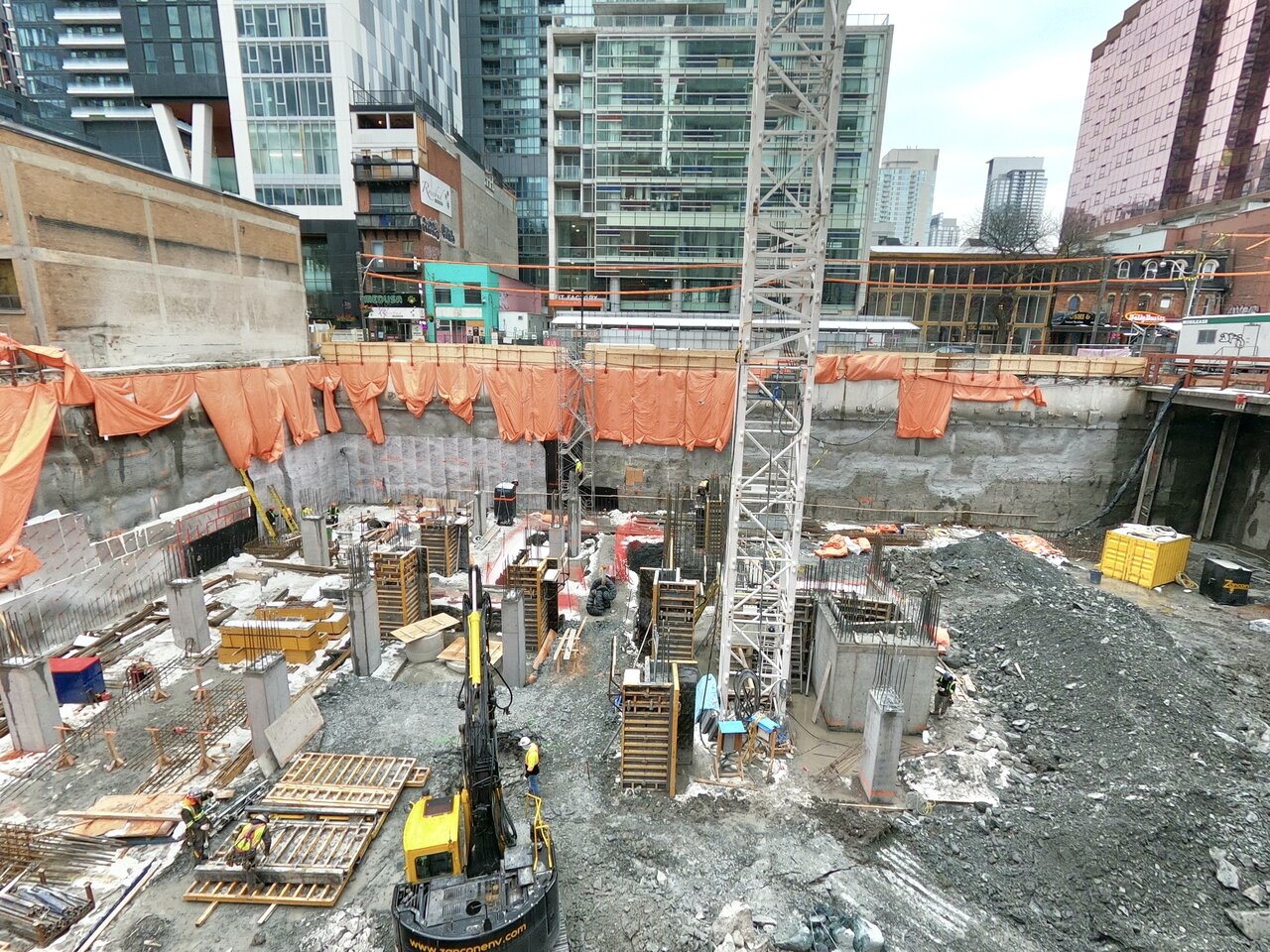 With excavation complete, concrete work is now underway below grade, image by UT Forum contributor Red Mars
With excavation complete, concrete work is now underway below grade, image by UT Forum contributor Red Mars
Concrete work will continue to advance over the next few months, and could be expected to emerge above grade by the end of the summer. After that, the tower will have another 49-storeys to complete before it can deliver on its promise of 612 new condo units with at-grade retail.
UrbanToronto will continue to follow progress on this development, but in the meantime, you can learn more about it from our Database file, linked below. If you’d like, you can join in on the conversation in the associated Project Forum thread or leave a comment in the space provided on this page.
Source Urban Toronto. Click here to read a full story

Canada’s Lodging Industry Made Big Comeback In 2022: C&W
Canada’s lodging industry rebounded in a big way in 2022 as revenue per available room (RevPAR) increased 91 per cent year-over-year and was 3.5 per cent over 2019’s year-end level, according to a new report from Cushman & Wakefield.
“Resorts performed very well through ’21 and ’22,” said Brian Flood, Cushman & Wakefield’s vice-president and practice leader for hospitality and gaming valuation and advisory. “City centre hotels were the ones that really felt the most impact through COVID.”
Average daily rates (ADR) surpassed 2019 levels starting in June 2022, driven by pent-up leisure demand and inflation. Room demand only began to exceed 2019 levels in September, with December showing the largest gain.
Group travel returned somewhat, along with events that had been postponed or cancelled the previous two years due to health precautions, according to Flood.
Though business travel still has a way to go to reach previous levels, Flood said those he’s spoken with are confident it will. Travellers are no longer avoiding densely populated major cities, as witnessed by the huge RevPAR gains made in those areas last year.
RevPAR rose about 160 per cent in Toronto, Montreal and Halifax, and about 125 per cent in Quebec City, Calgary and Vancouver.
Victoria recorded the lowest RevPAR growth, but the B.C. capital was one of the best-performing markets over the COVID-19 period and had less room for growth.
Slower transaction activity
Accommodation transaction activity softened in 2022 despite the strong recovery. Cushman & Wakefield tracked more than 160 transactions, accounting for approximately $1.6 billion in total volume – down from over 200 transactions and about $2 billion in 2021.
With last year’s stronger performance, most owners were happy to hold and reap the financial benefits after two years of losses.
“I think it’s still a sector that investors are attracted to,” Flood said. “It is a sector that does provide somewhat of a hedge against inflation.”
The 2021 transaction market was largely driven by the financial impact of COVID, owner fatigue and acquisitions by public bodies.
As in 2021, the 2022 market was dominated by sales of smaller, independently owned properties acquired by private buyers. There were very few transactions in larger urban centres and the Canadian hotel market has little institutional ownership.
“It was a good time to sell in a rising market if your long-term plan was not to hold on to the asset,” said Flood.
Biggest transactions of 2022
The largest 2022 sale was the $112.5-million acquisition of the 239-room The Oakes Hotel in Niagara Falls, adjacent to Fallsview Casino Resort and overlooking the falls.
It was acquired in July from Kerrio Corp. by Hennepin Realty Holdings, which plans to redevelop it into a twin-tower 1,140-room hotel.
The largest urban sale was the 285-room Bond Place Hotel in downtown Toronto, acquired by the City of Toronto from Silver Hotel Group for $94 million in September.
The property had been under contract to the city for emergency housing during COVID and was acquired to provide social housing.
Hotel 2170 Lincoln, a former 221-room Residence Inn by Marriott in downtown Montreal, was sold by Reluxicorp Inc. to Immeuble 2170 Lincoln Inc. for $63 million in November.
The plan is to convert the property to multiresidential, according to Flood.
There was an increase in strategic dispositions in 2022. Morguard sold several hotels from the Temple Hotels Inc. portfolio, which it fully acquired in February 2020, to a variety of purchasers from March through December.
They included 2,037 rooms at properties in Thunder Bay, Calgary, Regina, Winnipeg, Edmonton, Saskatoon, Moose Jaw, Lloydminster and Fort McMurray.
An Ontario portfolio of five Motel 6/Studio 6 properties with 613 rooms in Mississauga, Brampton, Burlington and Whitby was sold by G6 Hospitality to a private group in July.
Four of the hotels sold for $56.5 million and the other was a leasehold for which a price wasn’t registered.
Resorts and leisure-based properties continued to attract investor interest.
InnVest Hotels acquired the 65-room Charltons Banff and 99-room Royal Canadian Lodge in Banff from a local family for an undisclosed price in August. Both will be repositioned as upscale resort hotels.
Few distress sales
Since the lodging industry downturn was related more to COVID restrictions than a poor economy, and because governments and lenders were supportive of owners, there were few distress sales – just two per cent of the total in 2022.
“Having worked through some earlier downturns, like in the early ‘90s, lenders then were much more apt to close on properties that weren’t performing,” said Flood.
“I think lenders now realize that working with the owner is far more productive and will result in a better outcome for the owner and also for the lender.”
Accommodation development is picking up again
The recovery has reignited interest in development, particularly in suburban growth areas and secondary and tertiary markets that have been underserved in the past and where land is cheaper to purchase.
Through Q3 2022, 1,026 new hotel rooms opened, 7,126 were under construction and 27,497 were being planned. That last figure is 12 per cent above Q4 2019.
“I think we’re at pre-COVID levels in terms of new development,” said Flood. “We’re certainly getting a lot of calls from developers that had postponed projects but are moving forward today.”
Fifty-five per cent of the national development pipeline is in Ontario, with British Columbia second at 19 per cent.
At the city level, the Greater Toronto Area accounted for 22 per cent of the national pipeline, followed by Vancouver at six per cent and Montreal at five per cent.
The national pipeline, comprised of hotels under construction and in planning, represents about seven per cent of Canada’s existing room supply.
Outlook for 2023
Cushman & Wakefield anticipates hotel pricing will remain strong through 2023. Where better quality assets are available, brokers are reporting strong buyer interest and multiple bids.
As the Canadian hotel market enters the next phase of its recovery, Cushman & Wakefield anticipates a change in demand characteristics this year, with growth in the group and corporate sector despite a weaker economic outlook.
ADR growth is expected to moderate.
With more travel options available and the high cost of travel and hotels in Canada, some leisure demand could dissipate this year.
“There are some concerns around a recession and inflation has had an impact on consumer spending,” said Flood, who believes the overall outlook is still positive.
“I think the sector is quite healthy right now. I think the biggest challenge for investors is just difficulty in finding properties to acquire.”
Labour shortages and costs will continue to be an issue for hotels as they return to normal staffing levels.
The Hotel Association of Canada, Tourism HR Canada and the Government of Canadacreated the Destination Employment program last year to mobilize 1,300 new Canadians into hotel jobs in five regions of the country.
These groups continue to advocate for modifications to programs that will ease the labour shortage for the hospitality industry.
Source Real Estate News EXchange. Click here to read a full story
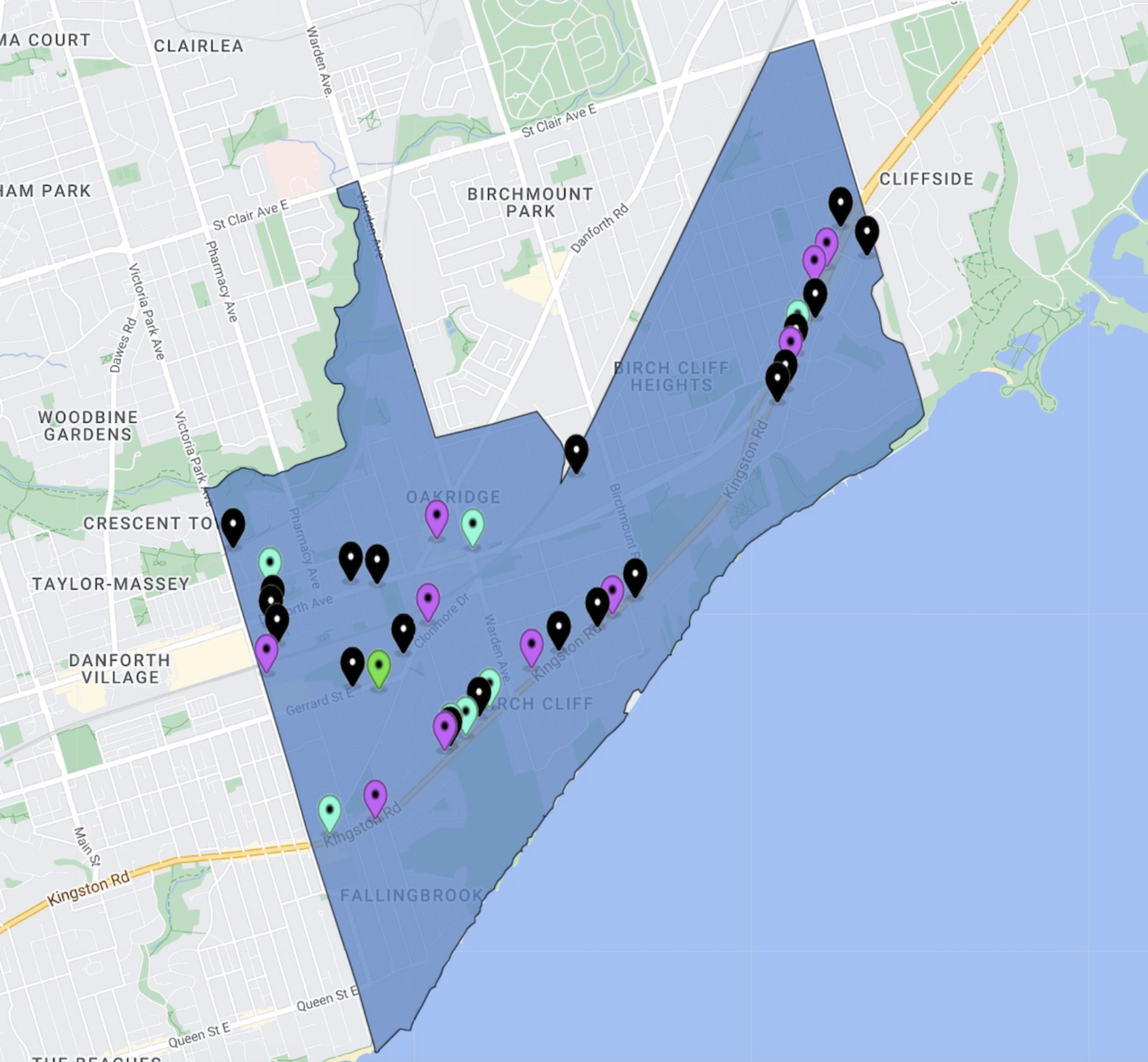
UTPro Instant Reports: Retail Grounds Projects in Southwestern Scarborough share
UrbanToronto is back with another instalment of our weekly UTPro Instant Report, analyzing the trends of development taking place in the most active nodes of Toronto and the GTA with the help of our UTPro software. Using the MLS Zone Report function, which instantly creates a report containing the key data on every project within a specific Multiple Listings Service Zone, we will be zooming in on one of the City’s eastern waterfront communities: Zone E06.
Located in the southwestern corner of Scarborough, E06 encompasses the Oakridge, Birchcliffe, and Cliffside areas, and is bordered roughly by Victoria Park Avenue to the west, Lake Ontario to the south, and Midland Avenue to the east, while the Zone’s north border is a meandering line that in part follows the Lakeshore East rail corridor and in part Taylor Creek. The Zone is generally defined by “Neighbourhood Area” land use designations, with narrow corridors of “Mixed-Use Areas” along Kingston Road and Danforth Avenue. Development over the last decade has been concentrated within these mixed-use areas, and has seen success at the mid-rise scale.
 Map of MLS Zone E06, containing 37 projects, image from UTPro Instant Report
Map of MLS Zone E06, containing 37 projects, image from UTPro Instant Report
Our MLS Zone Report for Zone E06 came back with a list of 37 total projects. Breaking that figure down, 20 of those projects qualify as pre-construction, 10 currently under construction, and the remaining seven projects are in the complete category. This represents a balanced spread, indicating that development in the area has been ongoing for years and is not merely a recent phenomenon for the area.
Among the various completed projects in Zone E06, the most recent of the group is Upper Beach Club, a seven-storey boutique condo that was completed in 2021. The project offers a total of 42 units, representing a markedly low density by the area’s standards, but formally offers an average impression of the massing that has seen success in the surrounding context. At a height of 24 metres, the building has little impact on the neighbouring single family homes.
 Complete design of Upper Beach Club boutique condo, image from submission to City of Toronto
Complete design of Upper Beach Club boutique condo, image from submission to City of Toronto
Just getting under construction in the west end of the Zone, Birchley Park is on the more ambitious side of the spectrum, seeking to deliver a new mixed-use community offering a total of 8 new buildings and a significant affordable housing component. With nearly 1,000 units planned, the project is taking advantage of the proximity to the higher order transit offering of nearby Victoria Park subway station to turn up the dial on density.
 Complete design for 8-building Birchley Park community, now under construction, image from submission to City of Toronto
Complete design for 8-building Birchley Park community, now under construction, image from submission to City of Toronto
Finally in the pre-construction stage, 2540 Gerrard East is another project that stands out in the group, making a push to advance the tolerance for high-rise development in an area that has seen little of it. At 32 storeys, the proposal is the tallest in the Zone, and not by a close margin, but an approval from the City could be a catalyst for future high-rise projects beyond the immediate surroundings of the Danforth.
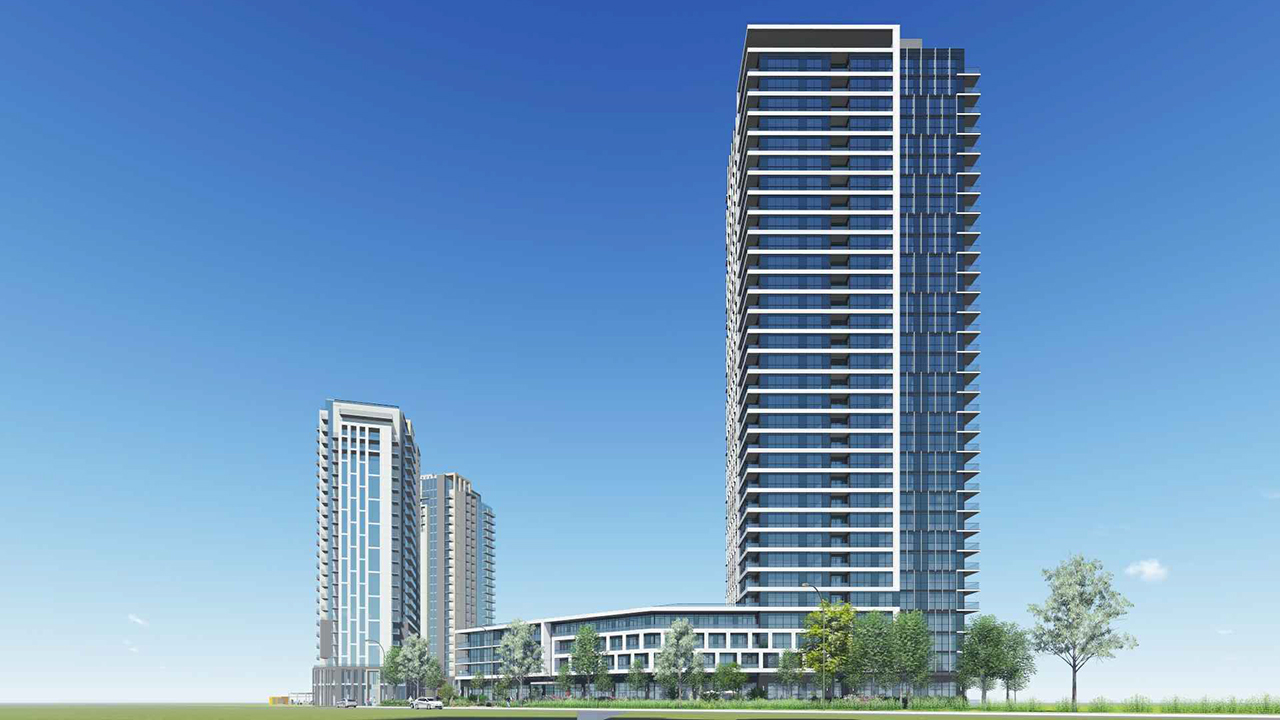 Complete design for 2540 Gerrard East, the tallest proposed project in Zone E06, image from submission to City of Toronto
Complete design for 2540 Gerrard East, the tallest proposed project in Zone E06, image from submission to City of Toronto
Looking at the accompanying statistics, it’s clear among this group of projects that an effort is being made to integrate commercial components into the largely residential slate of projects. Of the 37 total projects, 19 are listed as offering retail, which is an important inclusion for development striving to preserve the character of established retail strips along the Avenues. This fact is elaborated on further in the graphic below.
 GFA Breakdown for all 37 projects in Zone E06, image from UTPro Instant Report
GFA Breakdown for all 37 projects in Zone E06, image from UTPro Instant Report
While the incorporation of mixed-use programming is catching on in the Zone, height appears to be a characteristic that will continue to lag behind. With an average height of just below 30 metres, the relative dearth of higher order transit in the immediate area — other than Victoria Park subway station — may be having a direct impact on the tolerance for more aggressive density.
To access the full data set from this or any UrbanToronto Pro Instant Report—with even more stats and a full list of projects—purchase a report here! Stay tuned for next week’s instalment to learn more about why UrbanToronto’s Instant Report is one of the most valuable tools for staying informed on development in the GTA.
Source Urban Toronto. Click here to read a full story
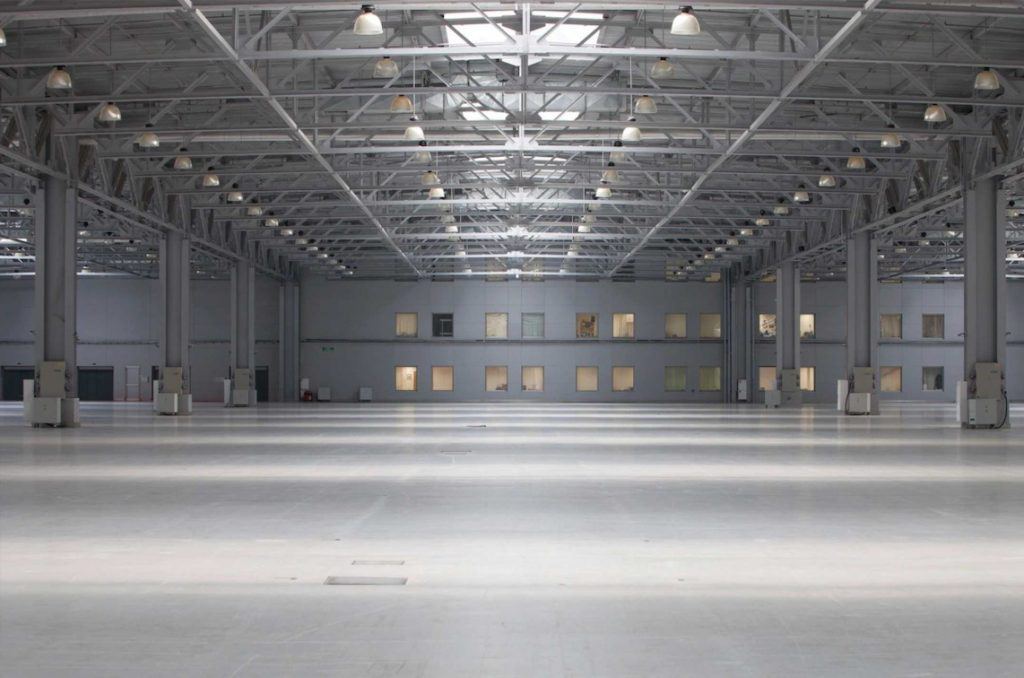
Canada’s Industrial Sector Still Has Room To Grow: RealCapital Panel
While there are concerns about potential headwinds, industrial remains the top-performing commercial real estate asset class in Canada.
And that’s expected to continue according to a three-person panel of executives, who’ve spent considerable time in acquiring, developing and managing industrial real estate, at the Feb. 28 RealCapital conference at the Metro Toronto Convention Centre.
The four men discussed industrial real estate performance, issues and challenges during the session. Colliers vice-chairman Gord Cook moderated the discussion and offered an introductory overview of the sector.
Industrial started seeing substantial rent growth in 2017, when the availability rate was around three per cent — about three times as high as it is now. It was already a landlord’s market when the COVID-19 pandemic hit and led to tremendous e-commerce expansion.
“That had a very strong ripple effect for not only the occupiers of industrial real estate, but the outlook of investment and where those investment dollars should be spent,” Cook said.
“Those fundamentals through COVID saw strong absorption levels and even further rates of growth within rental rates.”
Canadian industrial investment hit a record in 2021 after the pandemic-induced doldrums of 2020. That continued through early 2022 before a steady stream of interest rate hikes slowed activity.
Outlook for 2023
Triovest chief investment officer Prakash David said he’s working on three deals at the moment and is bullish on industrial real estate, but still thinks there will be a slowdown in activity.
He’s especially high on core-plus and value-add properties where environmental, social and governance elements can be improved to increase sustainability and profitability.
“We still feel really good about development because we have the fundamentals,” David said. “We think there are still good tenants out there and a lack of good space, notwithstanding a lot of new supply coming on in certain markets.
“So we’ll continue to invest there, but we’re going to be more disciplined about the way we underwrite and probably not bet that we’re going to absorb that space as quickly as we might have, or that rents will grow as quickly as we might have thought last year.”
“Industrial is a great asset class that has strong fundamentals and leasing can do well,” Choice Properties senior vice-president of office and industrial Andrew Reial said. “If it’s a well-located property with great functionality, I think people will want to be there.”
Dream Industrial REIT senior VP and head of investments Bruce Traversy thinks the first and second quarters of the year will likely be a bit slow, but he believes there are many buyers interested in value-add industrial real estate where they can increase rents.
There’s less enthusiasm for properties with long-term leases and relatively small annual rent increases, he added.
“The short-term view is tough to swallow as you wait for that cash flow to improve,” Cook noted.
While David thinks there will be continued industrial rent growth, Triovest is being conservative and cautious about its belief in hitting peak market rents at this point.
Property owners and brokers are becoming more open to selling pieces of a portfolio individually or in smaller bundles rather than as a whole because getting debt financing to make larger acquisitions has become more difficult for some buyers, according to Traversy.
More industrial development is needed
“The Canadian industrial development market has generally been under-supplying the market since 2008,” Cook explained.
“We had an exodus of merchant developers and we started to see more institutions building to core but, with the exception of maybe Alberta, the entitlement process for development always takes longer than expected.
“Land values and development charges were constantly running at a pace somewhat higher than rental growth until we hit about 2017.
“Through moderate absorption for over a decade, we continued to see those vacancy rates and availability rates drop to a level that was truly awkward to grow an economy. The benefit was dramatic rent growth.
“With the exception of Vancouver, we have a development pipeline that’s under two per cent. You put that into context and most U.S. markets are typically building two to five per cent of new inventory for markets that typically have five to seven per cent vacancies.
“Put that in the context of the Toronto market, where we would actually need to develop about 45 million feet and put it into the market just to get back to a five per cent availability rate.”
The Toronto industrial market currently has less than 14 million square feet under development, with pre-leasing generally occurring within six months of launch, Cook added.
Industrial rents across Canada
Cook said industrial rents last year rose by 18 per cent in Vancouver, 31 per cent in Toronto, 41 per cent in Calgary and 74 per cent in Montreal.
That helped offset increases in land prices, construction costs and development charges.
Triovest just leased a 50,000-square-foot industrial building in Vancouver for $27 per square foot, with annual four per cent rent escalations built in.
Comparatively, David said industrial space can still be had for nine dollars per square foot in Calgary. While Montreal rents have risen rapidly, they still lag Vancouver and Toronto.
“We’re investing heavily in Montreal and Balzac (a community north of Calgary) at the moment because we think they have room to run whereas in other markets I’m not sure they have as much,” said David.
Traversy said he thinks underwriting for five to 10 per cent rent growth is realistic.
Development postponements not expected
Cook wondered if some industrial developments might be postponed due to new underwriting, higher capitalization rates or concerns about capital markets and economic fundamentals.
“Most developers are in for the long haul as they’ve got the capital and balance sheet and I think they’re going to drive on,” Reial said.
“If you go to tertiary locations where you’re supporting Toronto but you’re an hour-and-a-half outside the city, maybe those numbers start getting a little riskier because there will be a flight to quality and being closer to major cities.
“But I think, for the most part, people will keep on driving forward.”
Even with older and smaller buildings, Reial said Choice is getting calls about space before it comes to the market.
New industrial space might be priced too low
Cook said lease renewals for 20- or 30-year old industrial buildings with clear heights of 22 to 30 feet are going for $17 on average, whereas new space with 40-foot clear heights, modern design and sustainability features are leasing for $18 to $21 per square foot.
He thinks tenants in those newer buildings are getting a great deal.
David agreed with Cook, but added: “We’re building best-in-class assets so that when times get really tough, just like in the office market, there’s a flight to quality and you know your cash flows.
“So right now, yes, we like that small-bay rent because you’re really getting more rent than you want to for that space. But it’s not the way to think of it over the long term and it will probably revert back.”
Choice has a lot of second-generation industrial product that’s performing well, in addition to its new developments.
“If you can afford $16 or $17 rents for 24-foot clear, paying $23, $24 or $25 isn’t unreasonable in a new-generation building,” Reial said, because you’re getting 50 per cent more space with a 36-foot clear height.
Source Real Estate News Exchange. Click here to read a full story







